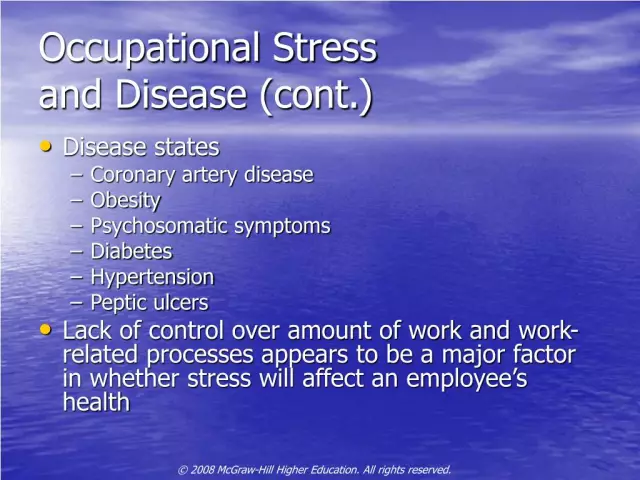- Author Rachel Wainwright [email protected].
- Public 2023-12-15 07:39.
- Last modified 2025-11-02 20:14.
Occupational diseases

As a rule, a person spends a significant part of his time at work, on average it is eight hours a day - a third of the day. The way he spends this time cannot but affect his health. Since each profession has its own characteristics, then occupational diseases can be very different. In people who are forced to spend many hours sitting, these are diseases associated with physical inactivity: osteochondrosis, excess weight, congestion. If the eyes are strained, then it may be dry eye syndrome, conjunctivitis, or myopia.
People employed in industrial production often have diseases associated with the ingestion of toxic substances used in production. So, an occupational disease of people involved in the production of aniline dyes is bladder cancer. If a person works at a construction site, his occupational diseases are usually associated with an overload of the musculoskeletal system and increased injuries, and so on.
There are many occupational diseases, and only one thing can be said with certainty - whatever the profession, any person has the risk of getting an occupational disease. However, this does not at all mean the inevitability of the disease.
It is important to be aware of the risk of occupational diseases and to take measures to prevent them. In production, such measures are included in safety measures - protective equipment, uniforms, technical breaks, and so on.
It is much more difficult with people whose profession is not so clearly associated with the risk of injury. For example, office workers. Uniforms are not supposed to them, as it would seem, from what to protect them? Meanwhile, at the present time it is one of the most "painful" professions, in terms of the number of occupational diseases, office employees are leading in medical statistics. Here and hemorrhoids, and erectile dysfunction, and osteochondrosis - diseases associated with a sedentary lifestyle, and tendovaginitis associated with monotonous hand movements, and dry eye syndrome, due to constant contact with the monitor, and constant colds due to drafts and air conditioners …

It turns out that it is quite possible to protect people of such considered harmless professions. To do this, you need to equip a gym, where employees could work out several times a day. Small businesses can easily afford to put at least two or three exercise machines, for example, an exercise bike and a treadmill, in extreme cases, give employees the opportunity to take a short walk. A break two or three times a day for 10-15 minutes would avoid a much greater loss of time, and the costs pay off faster than uniforms. Healthy and energetic employees will provide significantly more benefits than people exhausted by occupational diseases.
Found a mistake in the text? Select it and press Ctrl + Enter.






